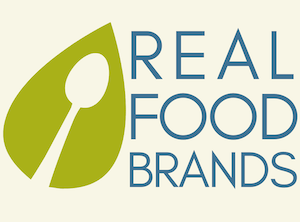An old saying in Marketing is “don’t talk about features, talk about benefits.” And while many of us nod our heads in agreement, the truth is that you need to understand both, and many business owners and marketers don’t know how to get started and put that advice into action to build a strong brand.
Today on the Real Food Brands Marketing Podcast, host and Food & Bev Brand Strategist Katie Mleziva explains the difference between features and benefits and walks you through two exercises to use this concept to create a brand that will resonate with consumers.
Identifying Product Features
Product features are also known as product attributes. They’re the tangible things about the product: size, quality, variety, texture, smell, color, etc. Another way of thinking about features is that they’re the “what.”
Benefits, on the other hand, are the “so what,” the answer to the question, “why do I care?” Some examples would be: reduces anxiety, creates fun, rewards me, helps me be in the know, brings hope, and supports wellness among others.
Making a Great Product or Building a Strong Brand?
When you’re making a great product, you’re concentrating largely on features, attributes and operations. These things are critical to get right, but there’s more to building your brand and unlocking growth in your business.
When you’re working to build a strong food or beverage brand you also need to think about consumer benefits and how to delight your consumers.
It all goes back to thinking through that important question: what are you really selling? It’s not just a popsicle made from fresh fruit. Why does that matter to the fans of your brand?
Two Tools to Identify the Benefits of Your Brand
Back in Episode 56, Katie shared the Bain Consulting Elements of Value Pyramid, a tool to help you understand how benefits can get broader in scope, from product attribute benefits to emotional benefits for the consumer all the way up to social impact. The key thing to understand is that you need to earn your way up the pyramid—you can’t just jump from product benefits to social impact without showing your work.
The second tool Katie walks us through in this episode is the Consumer Benefit Ladder. It’s a ladder with four rungs:
- Product attributes
- Product benefits
- Consumer benefits
- Consumer emotional benefits
Another way to think about it is to answer these four questions:
- What are the functional and tangible characteristics of the product?
- What benefits do these attributes offer?
- What is the reward the consumer gets from the product benefit?
- How does the consumer feel about this benefit?
Putting this down on paper allows you to work with it in an organized way. Katie walks you through the exercise with some examples and if you’d like a PDF to help, send her an email at katie@realfoodbrands.com.
Now, let’s go shake up shopping carts!
In This Episode:
- The difference between product features and consumer benefits.
- What questions to ask to help you differentiate between the two and why both are important to identify.
- Why emotional benefits are so important when trying to stand out and connect with consumers.
- How to make choosing your brand the easy choice.
- The different types of benefits presented in the Bain Elements of Value Pyramid.
- How to use the Consumer Benefits Ladder to shape your brand messaging.
Quotes:
“Strong brands build more emotional connections with people to help them stand out in a sea of options, and also leads to loyalty.” – @RealFoodBrands
“The mistake I see brands make—sometimes even big brands—is either to stay stuck in the product features at the bottom of the pyramid, or to jump all the way up to social impact at the top when they haven’t earned their way up the pyramid by delivering on the fundamentals of the features.” – @RealFoodBrands
Resources:


